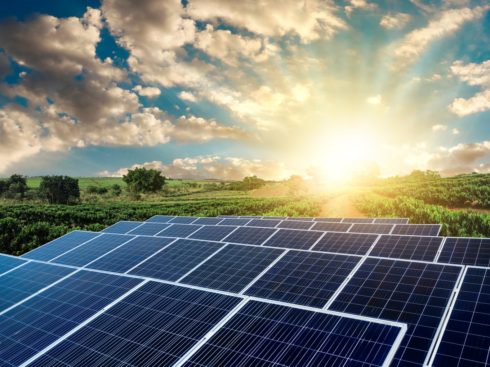SUMMARY
With job listings, virtual storefronts and merchant-focussed features, Google Pay is now more than just a payments app
Google will allow job seekers to apply for various kinds of jobs and create a professional profile through Google Pay
Using a tokenisation system, Google Pay will also let users transact using debit or credit cards and not just UPI
What does the average internet user think Google does? Search, right? Google knows that; it knows what it took to become a byword for search, but it also knows that more is at stake. Google search defined the internet for a whole generation of millennials in the late 1990s and early 2000s even in the Indian market, but its role today has diversified to the point where it can call the shots across the spectrum of technology including in payments, ecommerce, hardware, software and business tools.
From hardware to software to services and products, Google does it all these days. But often this effort seems to come from disparate parts of the company, which has perhaps the widest footprint in tech today when it comes to the scale of everything Alphabet and Google does. Despite its presence in pretty much every link in the internet value chain, Google has never been able to replicate a robust services ecosystem like the successful G Suite platform.
That is about to change and in a big way. If anyone viewed Google’s India business tamely prior to today — however naive that line of thinking may be — they would be seeing the company with a different set of eyes after the fifth edition of Google For India.
And it’s all come down to one product — Google Pay.
When Google Tez came to India, no one imagined that the app would snowball into Google’s biggest chance of laying its claim in the Indian market. Tez became Google Pay last year and is now the second-most used UPI payments app in the country, according to data released by the National Payments Corporation of India.
India is the key market for Google Pay. If anyone doubts that statement, they might have overlooked the fact that Ambarish Kenghe, who heads Google Pay globally, is based out of Bengaluru.
In fact, at the Google For India event today (September 19), Kenghe began his session with that tidbit — just to underscore how central India is to Google Pay’s efforts. Google Pay launched a merchant-focussed app, announced new ways for stores to bring their inventory online through the Spot platform on Google Pay and laid out the improvements in digital payments at offline retailers at the Google For India event.
Beyond Google Pay, the new additions to Google Assistant for the Indian market also fit into Google’s ecosystem approach. Google Assistant in India will soon allow users to order food from a range of select delivery partners using just their voice.
The final piece of the new Google ecosystem comes from Google Jobs, which is actually a part of the Google Pay platform in India. Jobs also uses the Spot platform to enable retailers to list vacancies and requirements in the app.
By the time Google had laid out its plans for the revamped Google Pay in India, announced the Spot platform and launched Jobs in India, the Google ecosystem picture was getting much clearer.
And when one considers the Google Maps changes that the company had announced a couple of months ago to allow customers to discover deals and places of interest, Google’s ecosystem approach for India seems to be solidifying in a big way this year.
Is This Google Pay 2.0 For India?
The first change — Google Pay For Business is a logical evolution for Google Pay. It allows merchants to support and accept UPI payments and does verifications through video KYC.
Sharath Balasu, director, product management, Google Pay told Inc42 that the Google Pay for Business would also let merchants track their earnings, get income statements periodically and also earn rewards based on the number of transactions. Balasu added that that’s largely to incentivise the use of Google Pay and UPI payments.
Balasu revealed a little more about the video KYC that Google demoed on stage. The demo seemed to have a computerised voice on the other line. So the first question that popped up was is Google using AI to act as a caller for the merchant KYC?
“It’s not there yet,” Balasu was quick to point out, saying the training data for AI to perform verification is a lot.

But Google automates certain aspects. While human callers are given a script, the video stream of the call captures snapshots of documents to verify identity and confirm ownership. To ensure that not just anyone can sign up and take control of a shop’s earnings, the video call has steps which go a long way towards proving ownership — besides the documents that prove this.
The merchant app is just the first piece of the Google ecosystem puzzle.
Tokenisation Comes To Google Pay
Google is also making it much easier for customers to pay for goods and services using modes other than UPI. Using tokenisation, Google Pay will let users add credit and debit cards for transactions to reduce its own reliance on UPI.
With this in place, customers can use an online service such as Zomato, pay for food orders using Google Pay, and use their card to fulfil the transaction. Thanks to the token system, Zomato does not need to have customer card details saved, which are supplied by Google Pay’s token. Google also automates the OTP input to make card payments more seamless than they are currently.
Google Pay Goes Offline With Spot Platform
The next major play for Google Pay is the Spot platform. Spot platform is Google’s way of bringing any store online. Using Spot, retail outlets and kirana stores to bring their inventory online which boosts their reach, helps them serve customers better and gives them greater traction than just walk-ins.
Spot codes are just like QR codes, but with a more vibrant colour scheme. Spot codes also have NFC support so customers can scan Spot codes and order and pay, return for pickups, without physically opening the Google Pay app.
 Using Google Pay APIs, stores can enable digital payments through Google Pay and can also help customers pick up purchases at a later time. Customers can select from a range of products through any Spot store, which is simply added to the Google Pay app like a regular contact. Through the Spot store, customers can go about purchasing products as they would on a regular ecommerce website.
Using Google Pay APIs, stores can enable digital payments through Google Pay and can also help customers pick up purchases at a later time. Customers can select from a range of products through any Spot store, which is simply added to the Google Pay app like a regular contact. Through the Spot store, customers can go about purchasing products as they would on a regular ecommerce website.
Spot stores will be visible in the Google Pay app and will be designed, developed and hosted by the business itself. This means stores can retain some of their branding elements, which increases brand recall tremendously.
The best part about Spot from a customer point of view is that no downloads are required of third-party apps such as eat.fit or other partners that are working with Google on Spot. Spot codes are not just for retail outlets. Digital platforms such as GoIbibo, MakeMyTrip, Redbus and Urbanclap have also signed up with Google to allow customers to quickly make bookings through the Google Pay app, without opening a separate app.
Other partners include eat.fit and Rebel Foods’ brand Oven Story. Rebel Foods is also a partner for the voice-based food ordering through Google Assistant.
Google says it will display Spot codes at key public locations such as airports, train stations and malls to help citizens avail services such as rides or other transit mode options or hyperlocal services easily.
Further, Spot codes can be added on packaging by retail partners to enable upselling, boost retention and create a stronger loyalty bond in the customer’s minds. Stores can even create special offers for customers through Spot and manage the customer queue during rush hours. The new Google Pay and Spot keep users informed about whether their orders are ready or still on the waitlist.
“Think of an electronics chain that wants to let you know that the latest phone you’ve been waiting for is back in stock, or an online travel service that wants to send you the itinerary of an upcoming trip. Each of them want to build customised and branded experiences, where customers can discover, buy and engage directly with a business without having to install an app, create new accounts or share payment details with every business they use,” Google said.
Google Pay Also Woos Job Seekers
The second big change is Google Jobs. Jobs was born as Kormo and it’s operational in Bangladesh and Indonesia under that name. Kormo general manager Bickey Russell added that Kormo coming to India as Jobs is similar to how Google Tez was rebranded to Google Pay last year and its functionality expanded.
Now Jobs is entering the Indian market in a more expansive avatar than Kormo, and lets job seekers create a profile that can be easily shared among prospective employers.
Google Jobs is launching with 25 early partners, starting with Delhi NCR, followed by a pan-India launch later this year. These partners include the likes of Healthkart, Dunzo, FreshMenu, Travel Triangle, Swiggy, Delhivery, Zivame, 24Seven, FabHotels, Rapido, MedLife, Rivigo, and others.

From what we know so far about what Google has planned Jobs to target temp jobs, gig economy workers or any business which has a high workforce requirement. Examples used by Russell included the likes of Biba, a women’s apparel brand and Healthkart, which sells medicines. But startups make up a big portion of Jobs partners at this time, Russell told Inc42.
Google has tied up with the National Skills Development Corporation and Skill India to bring these job-centric Spot codes to offline locations as well as NSDC centres. For example, those visiting any outlet run by a Google Pay business partner can scan the Spot code to view openings and apply instantly.
Jobs uses machine learning algorithms to recommend jobs and training content to help users prepare for interviews and learn new skills. The platform also makes it easy for them to apply, schedule interviews and engage directly with potential employers.
Russell was clear that the focus of Jobs is in industries and occupations that have a high market demand at the moment. The company is steering clear of specialised engineering jobs such as programmers for AI and ML applications, as these require a different approach.
Jobs is about solving the problems for Indians when applying for entry-level jobs such as gig economy roles with delivery and logistics companies, or retail sales positions, or retail customer service positions.

Google’s Ecosystem For Businesses And Customers
What’s clear is that Google Pay is the fulcrum of the new ecosystem that Google is bringing to life in India. But don’t go calling it a super app yet. In fact, Google Pay’s Balasu steered clear of the phrase in no uncertain terms. But he did agree that it’s the beginning of an ecosystem approach.
Customers can order food using Google Assistant, restaurants, retail businesses and kirana stores can fulfil online orders offline and in person, and these businesses can also fill in any job requirements using the Google Jobs platform, enabled through Google Pay.
The revamped Google Pay app has just become Google’s doorway into food delivery, hyperlocal services, hybrid or omnichannel ecommerce and job matching. Not only can services and merchants come on board the Google Pay platform using Google Pay for Business, but they can also recruit using Google Pay.
Google Pay now wants to be a key part of the retail value chain cycle — it started with payments, and has now expanded to retail shopping, while covering job search and skill development for the very same businesses that are using Google Pay for payments and business growth. It’s the first clear sign that Google is bringing the disparate pieces of its grand orchestra together for the Indian market. Finally.



























